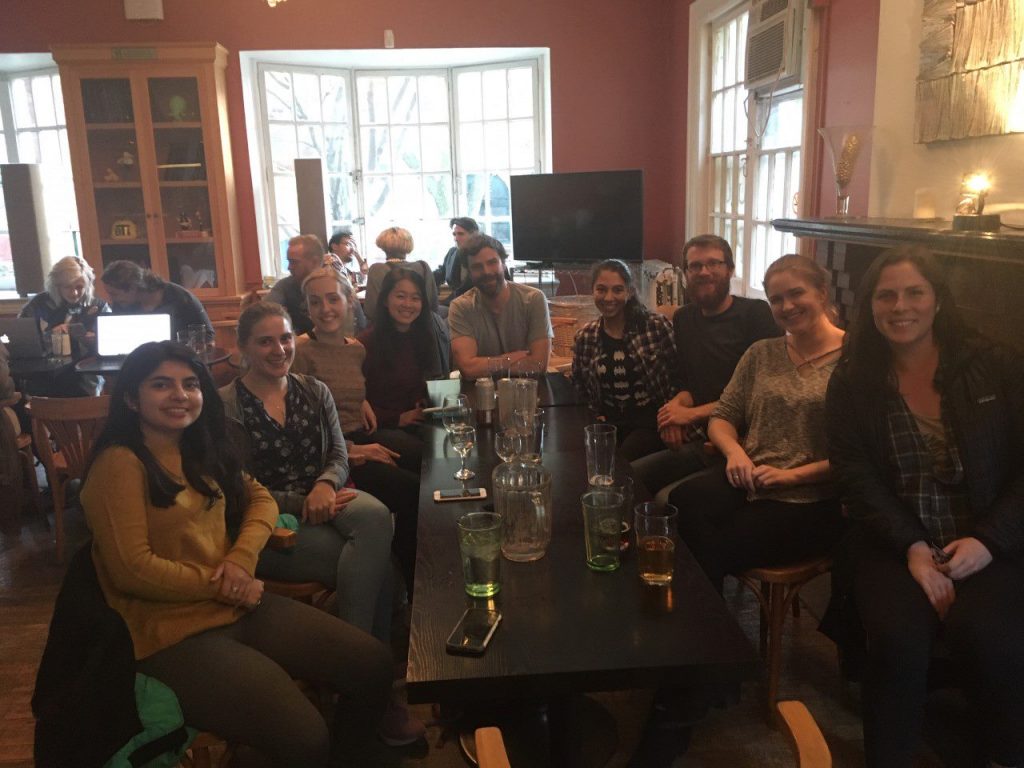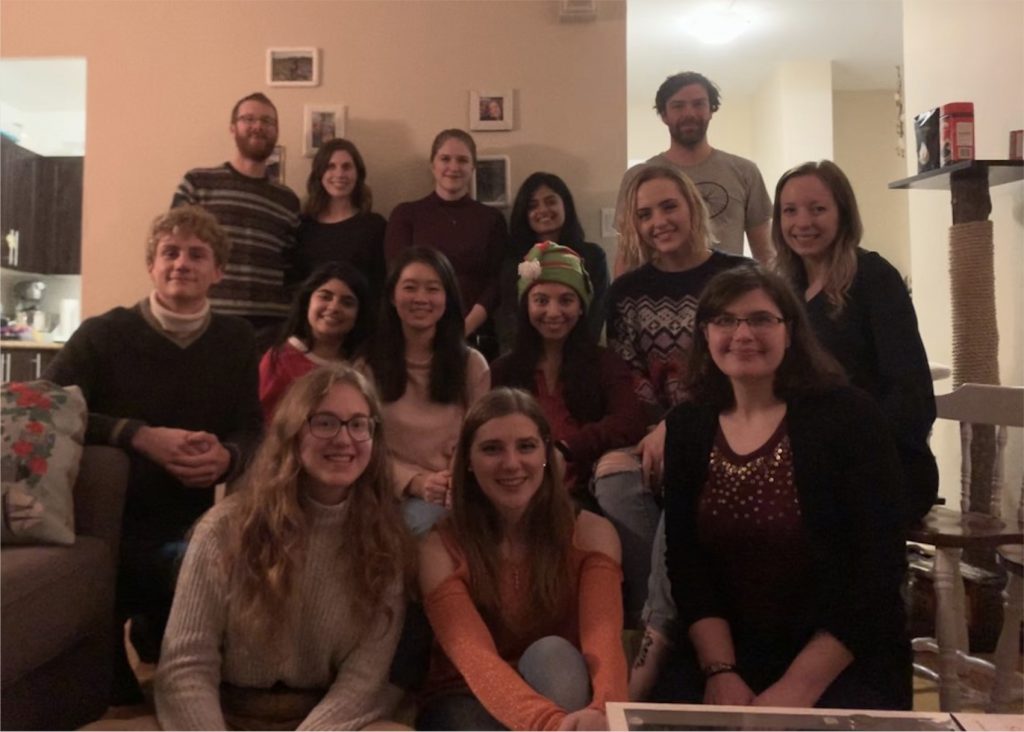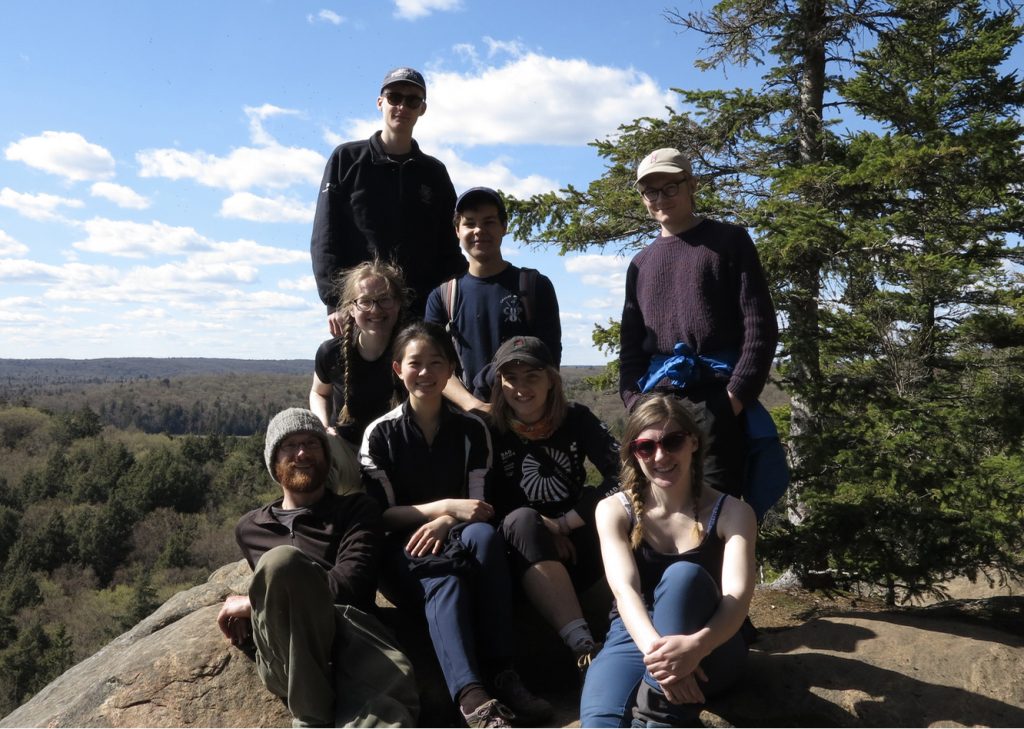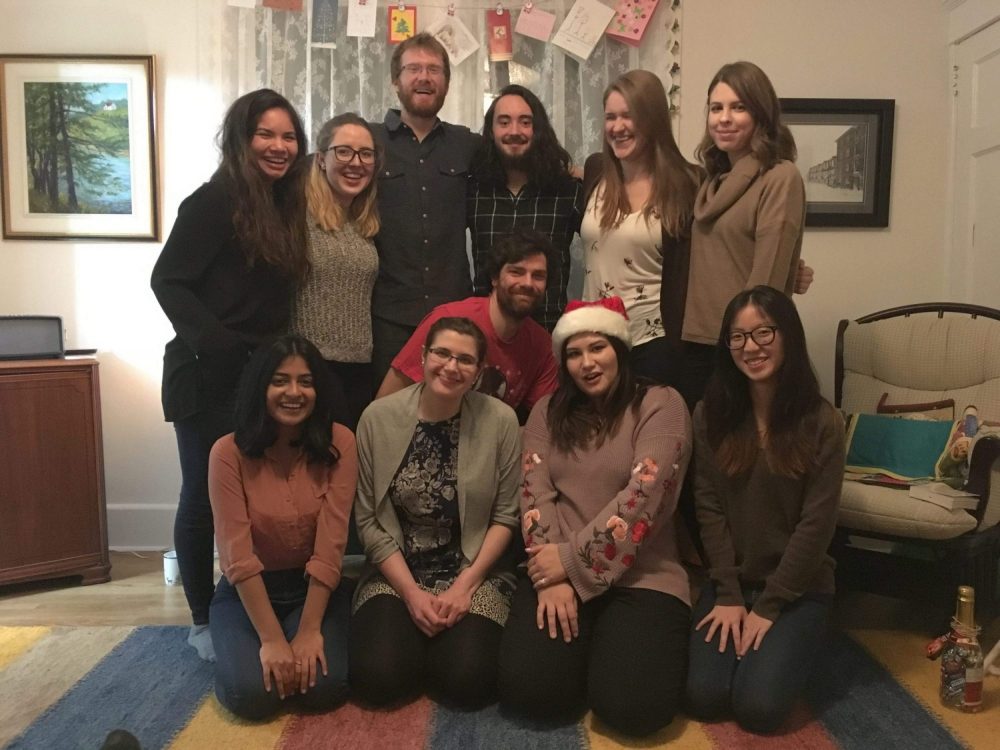





Prospective Graduate Students and PDFs
I am interested in hearing from prospective undergraduate students, graduate students at both the Master’s and PhD level, as well as PDFs. The Department of Ecology and Evolution is a tightly-knit community where evolutionary ecologists flourish. We also draw from world-class expertise in evolutionary biology, genetics, community ecology, population ecology, and conservation biology, all of which can be found right here in the department.
I am looking for students who are motivated, imaginative, and who take initiative. My students work on projects that I design for them, or on projects they have designed themselves. I give students the freedom to be creative while remaining available for advice, trouble-shooting, and suggestions. I encourage students to be well-read, both in the classic and current literature of their field, and students ought to graduate with strong statistical skills.
If you are curious about life in the lab, or are unsure of what to expect, please read the Rollinson Lab Mission and Operating Principles (below) which reflects my expectations of students, and what students can expect of me.
Graduate students that have an interest in fundamental and applied quesetions in evolutionary ecology, and with an interest in amphibians and reptiles, are especially encouraged to apply. Please send me an email explaining your interests and background, along with your CV, a writing sample, and an (unofficial) transcript.
The Rollinson group is especially proud of its undergraduate-led research, and we endeavour to publish this work and give our core undergrads the experience and expertise they need to succeed in academia. A sample of our recent, undergrad-led publications is below, and undergrads keen on science, writing, and publishing are especially encouraged to apply to the group.
Gao GHY, Moldowan PD, LeGros DL, Sahar M, Tattersall GJ, Rollinson N. 2024. Frequency of adult amphibian abnormalities and consequences for fitness-related traits in an uncontaminated environment. Canadian Journal of Zoology
Lacroix C, Schueler FW, Rollinson N. 2023. A 91% decline in a common anuran in an otherwise stable amphibian community inferred from 17 years of rapid road surveys Animal Conservation 10.1111/acv.12874
Lacroix C, Davy CM, Rollinson N. 2022 Hatchling vocalisations and beneficial social interactions in subterranean nests of a widespread reptile. Animal Behavior 87 (2022): 233-244
Lawson L., Rollinson N. 2021. A simple model for the evolution of temperature-dependent sex determination explains the temperature sensitivity of embryonic stress in imperiled reptiles. Conservation Physiology 9: coab020
Connoy JWH , Leivesley JA, Brooks RJ , Litzgus J, Rollinson N. 2020. Body size of ectotherms constrains thermal requirements for reproductive activity in seasonal environments. Canadian Journal of Zoology 98 (10), 651-659.
Terebiznik M, Moldowan P., Lacroix C., Connoy JWH , Leivesley JA, Rollinson N. 2020. Hatchling turtles ingest natural and artificial incubation substrates at high frequency. Behavioral Ecology and Sociobiology 74 (11), 1-12.
2019Hawkshaw D.M., Moldowan P.D., Litzgus J.D., Brooks R.J., Rollinson N. 2019. Discovery and description of a novel sexual weapon in the world’s most widely-studied freshwater turtle. Evolutionary Ecology 33: 889-900.
Francis E.A., Moldowan P.D., Greischar M.A., Rollinson N. 2019. Anthropogenic nest sites provide warmer incubation environments than natural nest sites in a population of oviparous reptiles near their northern range limit. Oecologia 190: 511-522.
Rouleau C.*, Massey M.D. *, Rollinson N. 2019. Temperature does not affect hatch timing in snapping turtles (Chelydra serpentina). Journal of Herpetology 53: 165-169. *Author contribution was equal
Santilli J., Rollinson N. 2018. Toward a general explanation for latitudinal clines in body size among chelonians. Biological Journal of the Linnean Society 124:381-393.

Recent Comments